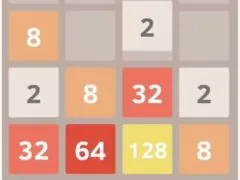SPIDER SOLITAIRE
SIMILAR GAMES
Description
Spider Solitaire - CGUB
About Spider Solitaire - CGUB
Welcome to our comprehensive exploration of Spider Solitaire, a timeless and intellectually stimulating card game that continues to captivate players worldwide. This guide delves deep into the nuances of the game, offering insights and strategies that will elevate your gameplay. We understand the allure of a well-played game of cards, and Spider Solitaire, in particular, stands out for its intricate yet accessible design. Our aim is to provide you with the most detailed and engaging information available, ensuring you can master every aspect of this classic challenge.
The Core Mechanics of Spider Solitaire
At its heart, Spider Solitaire is a game of order and precision. The primary objective is to **arrange a single deck of 52 cards into descending sequences**. These sequences must be built within the tableau, which consists of ten columns. The ultimate goal is to **clear all cards from the tableau** by forming complete sequences from **King down to Ace**. When such a sequence is successfully assembled, it is automatically removed from the play area, bringing you closer to victory. The game is a fascinating blend of **luck and strategy**, demanding both foresight and adaptability from the player.
Understanding the Tableau and Card Movement
The tableau in Spider Solitaire begins with 54 cards dealt into ten columns. The first four columns receive six cards each, while the remaining six columns are dealt five cards. Crucially, only the top card of each tableau column is face up, revealing the starting point of your strategic endeavors. The remaining cards are dealt face down. Players can **move cards one at a time** or in **runs of cards of the same suit and in descending order**. This ability to move stacks is a key strategic element, allowing for more complex maneuvers and efficient clearing of columns.
A fundamental rule governing card movement is that **any face-up card can be moved onto another face-up card if it is one rank lower**. For instance, a 7 of any suit can be placed on an 8 of any suit. This applies regardless of suit. However, to form a complete sequence for removal, cards must be of the **same suit and in strict descending order**. This distinction is vital for progressing through the game and achieving the game's ultimate objective.
The Role of Suits in Gameplay
The complexity and challenge of Spider Solitaire are significantly influenced by the number of suits used. Traditionally, the game is played with **one suit**, which is the easiest variant. As players become more adept, they can progress to **two suits**, increasing the difficulty and strategic depth. The most challenging version utilizes **all four suits**, demanding the highest level of planning and execution. In the one-suit and two-suit versions, the suits are often treated as interchangeable for the purpose of building partial sequences on the tableau. However, for the final sequence of thirteen cards (King to Ace) to be removed, all cards within that sequence must belong to the **same suit**.
Strategic Approaches to Mastering Spider Solitaire
While luck certainly plays a role, particularly in the initial deal of the cards, **strategic planning is paramount** to consistently succeed in Spider Solitaire. We have identified several key strategies that players can employ to enhance their gameplay and improve their chances of a successful outcome.
Prioritizing Empty Columns
One of the most powerful moves in Spider Solitaire is to **create an empty column**. An empty column can receive any card or sequence of cards, regardless of suit or rank. This provides immense flexibility for reorganizing your tableau and uncovering hidden cards. Therefore, a primary strategic objective should be to **clear tableau columns whenever possible**. This often involves strategically moving cards to fill gaps or to build sequences that can be moved to other columns, ultimately freeing up a space.
Uncovering Face-Down Cards
The game cannot progress if all face-down cards remain hidden. A critical aspect of strategy involves **actively seeking to reveal face-down cards**. This is achieved by making valid moves that expose the cards beneath. Frequently, players will move a single card to an empty space or onto a lower-ranked card specifically to reveal the card below it. This requires careful consideration, as you must ensure the card you move does not inadvertently block a more advantageous move later on.
The Importance of the Stock Pile
The stock pile contains the remaining cards that are not initially dealt to the tableau. When you believe you have made all possible moves with the face-up cards, you can **deal a new row of cards from the stock pile**. This action distributes one card face-up to each of the ten tableau columns. However, it is imperative to use the stock pile judiciously. It is generally advised to **deal from the stock pile only when you have no other valid moves** or when you have at least one card face-up in every tableau column. Dealing prematurely can sometimes complicate the game by adding more cards to an already crowded tableau without a clear strategic advantage.
Planning for Suit Sequences
As mentioned earlier, the ultimate goal is to form complete sequences of a single suit from King down to Ace. Players should constantly be **thinking ahead and planning moves that contribute to building these suit sequences**. This involves not just placing cards where they fit but where they *should* fit to eventually form a cohesive run. Sometimes, this might mean making a seemingly suboptimal move in the short term to position cards for a more significant gain later.
Recognizing and Exploiting Sequences
When you encounter a partial sequence of cards that are of the same suit and in descending order, treat them with care. These are valuable building blocks. Look for opportunities to **extend these partial sequences** with appropriate lower-ranked cards. Conversely, be cautious about breaking up existing partial sequences unless it is absolutely necessary to make a move or uncover a crucial card.
Variations and Difficulty Levels
Spider Solitaire offers a rewarding experience for players of all skill levels, primarily through its adjustable difficulty. The most common variations are based on the number of suits used:
- One Suit (Easy): This is the most straightforward version, using only the spade suit. It is an excellent starting point for beginners to learn the fundamental mechanics and strategies of the game. The fewer suit restrictions make it easier to build sequences and clear the tableau.
- Two Suits (Medium): Introducing a second suit, such as spades and hearts, increases the challenge. Players must now be more mindful of suit compatibility when building sequences, though inter-suit moves are still permitted on the tableau.
- Four Suits (Hard): This is the ultimate test of a Spider Solitaire player's skill. With all four suits in play, the strategic demands are significantly higher. Players must meticulously manage card placement, ensuring that sequences being built are of the correct suit for eventual removal, while also utilizing inter-suit moves strategically to manage the tableau.
The Role of Randomness and Probability
It is important to acknowledge that Spider Solitaire, like many card games, incorporates an element of randomness. The initial shuffle and deal of the cards can significantly influence the ease or difficulty of a particular game. Some deals are naturally more favorable than others. However, skillful play can overcome many challenging deals, and strategic decision-making is what often separates consistent winners from those who struggle. Understanding the probabilities associated with different moves can also contribute to better strategic choices.
The Enduring Appeal of Spider Solitaire
For decades, Spider Solitaire has remained a popular choice for card game enthusiasts. Its appeal lies in its perfect balance of simplicity and complexity. The rules are easy to grasp, allowing new players to quickly start their first game. Yet, the strategic depth ensures that even experienced players can find new challenges and opportunities for improvement.
The game provides a satisfying mental workout, encouraging players to think critically, plan ahead, and adapt to changing circumstances. The process of systematically clearing the tableau and assembling complete sequences is intrinsically rewarding. It’s a game that offers both a relaxing diversion and a stimulating mental exercise, making it suitable for players seeking a casual pastime or a more rigorous cognitive challenge.
Cognitive Benefits of Playing Spider Solitaire
Beyond mere entertainment, engaging with Spider Solitaire can offer several cognitive benefits. The game actively promotes:
- Problem-Solving Skills: Each move presents a mini-problem to solve. Players must analyze the current state of the tableau and determine the optimal move to advance their game.
- Strategic Thinking: Players must not only react to the current situation but also anticipate future possibilities and plan several moves in advance.
- Memory and Concentration: Keeping track of available cards, potential sequences, and the overall state of the game requires sustained focus and a good memory.
- Decision-Making: With multiple possible moves available at any given time, players must learn to weigh the pros and cons of each option and make informed decisions.
Tips for Optimizing Your Gameplay Experience
To further enhance your Spider Solitaire journey, consider these practical tips:
- Take Your Time: There is no time limit in most versions of Spider Solitaire. Use this to your advantage by carefully considering each move before making it.
- Don't Be Afraid to Undo: If you make a mistake or realize a move was not optimal, many digital versions allow you to undo your last move. Utilize this feature to correct errors and explore alternative lines of play.
- Study Your Deals: After a game concludes, whether won or lost, take a moment to review the final state of the tableau. This can help you identify missed opportunities or understand why certain strategies were more or less effective.
- Practice Regularly: Like any skill, proficiency in Spider Solitaire improves with consistent practice. The more you play, the more intuitive strategic decisions will become.
- Experiment with Difficulties: Don't shy away from trying the more challenging two-suit and four-suit variations once you feel comfortable with the one-suit version. The increased complexity offers a fresh and rewarding experience.
The Evolution of Spider Solitaire
While its roots are firmly planted in traditional card games, Spider Solitaire has seen a significant evolution with the advent of digital platforms. Modern implementations offer features such as automatic card sorting, hints, score tracking, and customizable aesthetics, making the game more accessible and enjoyable than ever before. These digital versions allow players to engage with the game anytime, anywhere, contributing to its sustained popularity.
The transition to digital formats has also allowed for sophisticated tracking of statistics and performance. Many players enjoy aiming for personal best scores, fastest completion times, or perfect games (where no mistakes are made). This competitive element, even against oneself, adds another layer of engagement to the experience.
Conclusion: A Timeless Challenge Awaits
Spider Solitaire is more than just a game; it is a test of intellect, patience, and strategic prowess. Whether you are a seasoned card player or new to the world of solitaire, the challenges and rewards of Spider Solitaire are undeniable. We are committed to providing you with the most in-depth resources to help you excel. By understanding the core mechanics, employing effective strategies, and practicing diligently, you can unlock the full potential of this classic game and achieve mastery. Embrace the challenge, refine your tactics, and enjoy the deeply satisfying experience of conquering the tableau in Spider Solitaire.
Spider Solitaire, a classic card game, challenges players to arrange a deck of cards in order using minimal moves. The objective is to create descending sequences from King to Ace within the tableau columns. Once a sequence is completed, it is automatically removed from the tableau, the goal being to clear all cards. The game is renowned for its ability to combine both luck and strategy, giving players the chance to plan their moves ahead and adapt their strategy based on the situation of the cards.
Refine Skills with Varied Difficulties
Spider Solitaire offers varying levels of difficulty by providing one, two, or four suits to play with, which adjusts the complexity and strategy required to win. Beginners might start with the one-suit game to grasp the basic mechanics, while more experienced players can challenge themselves with the four-suit version, which requires more strategic planning and foresight. This versatility makes Spider Solitaire an enduring favorite among solitaire games, appealing to both casual players looking for a relaxing pastime and more competitive players seeking a mental exercise.















































